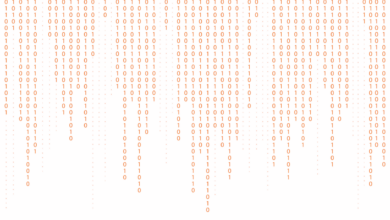
Hackers Are Launching Fileless Cyber Attacks
Hackers are launching fileless cyber attacks, a sophisticated and insidious threat that bypasses traditional security measures. This new form of attack leverages legitimate system tools and scripting languages to infiltrate systems, making detection and prevention significantly more challenging. We’ll explore the tactics, motivations, and consequences of these attacks, along with strategies for detection and prevention.
Fileless attacks, unlike traditional malware, don’t rely on malicious files. Instead, they exploit existing system tools, making them harder to identify and block. This evolution in cybercrime necessitates a shift in our security strategies. Understanding how these attacks work is crucial to protecting yourself and your organization.
Defining Fileless Attacks

Fileless attacks are a growing threat in the cybersecurity landscape. These attacks exploit legitimate system tools and processes to avoid detection by traditional antivirus and intrusion detection systems. Unlike traditional malware, which relies on malicious files, fileless attacks operate entirely in memory, leaving minimal traces. This makes them significantly harder to identify and eradicate.Fileless attacks leverage the inherent functionality of operating systems and applications, making them nearly invisible to traditional security measures.
This stealthy nature allows attackers to execute malicious code without the need to persist on the system’s hard drive, making it difficult to identify the malicious activity and often necessitating deeper analysis to detect the threat.
Fileless Attack Techniques
Fileless attacks utilize various techniques to achieve their malicious objectives. These include leveraging legitimate system tools and scripting languages to execute commands and actions without the need for executable files.
- Exploiting legitimate system tools: Attackers can utilize legitimate system tools, such as PowerShell, command-line interfaces, or scripting languages, to execute malicious code. This disguises the attack by embedding commands within these tools, which are frequently used by administrators, making them difficult to detect. For example, an attacker could create a PowerShell script to execute malicious commands.
- Using scripting languages: Scripting languages like JavaScript, VBScript, or even Python can be leveraged to execute malicious commands. This technique allows attackers to craft sophisticated payloads without relying on traditional executable files. The attacker could embed malicious commands within a seemingly innocuous script that is downloaded or executed through a legitimate application or service.
- Employing memory-based attacks: This involves loading malicious code directly into system memory, avoiding the need for disk-based execution. This technique bypasses many traditional security measures that look for malicious files. The attacker could load malicious code directly into memory using a vulnerable application, allowing the attack to run without any files being written to disk.
Comparison with Other Attack Vectors
Fileless attacks differ significantly from other attack vectors, like traditional malware infections or phishing scams. While traditional malware typically leaves behind discernible traces (files, processes), fileless attacks operate more discreetly.
- Traditional Malware vs. Fileless Attacks: Traditional malware often relies on executable files, making them easier to detect and analyze. Fileless attacks avoid this reliance, operating in memory and making it harder for security tools to detect and respond to the attack.
- Phishing vs. Fileless Attacks: Phishing attacks aim to trick users into revealing sensitive information. Fileless attacks, however, directly target system resources and processes, bypassing the user interaction aspect of phishing.
Bypassing Traditional Security Measures
Fileless attacks are adept at evading traditional security measures because they do not rely on files. Traditional antivirus software, often designed to scan and detect malicious files, is rendered ineffective against these attacks.
- Antivirus Evasion: Fileless attacks evade signature-based antivirus software because they don’t create the signature-based artifacts the software looks for. The attack operates in memory, leaving no trace that triggers an alert.
- Intrusion Detection System (IDS) Bypass: IDS systems often rely on predefined rules and signatures to detect malicious activities. Fileless attacks are designed to avoid these patterns, enabling them to bypass these systems and continue their malicious activities undetected.
Fileless Attack Examples
| Attack Technique | Description | Bypassed Security Measures | Example |
|---|---|---|---|
| PowerShell Scripting | Malicious commands embedded within a seemingly legitimate PowerShell script. | Signature-based antivirus, some IDS systems. | An attacker creates a script that, when executed, downloads and executes a malicious payload. |
| Memory-based injection | Loading malicious code directly into system memory. | Traditional file-based security measures. | An attacker exploits a vulnerability in a web browser to inject malicious code into memory. |
| Scripting Language Exploitation | Leveraging scripting languages like JavaScript or VBScript to execute malicious code. | Antivirus solutions not specifically designed for scripting language analysis. | A malicious script embedded within a legitimate website or email attachment. |
Motivations and Tactics of Hackers
Fileless attacks, leveraging legitimate system tools and processes, are a growing threat. Understanding the motivations behind these attacks and the tactics employed is crucial for effective defense. This knowledge empowers organizations to anticipate and mitigate the risks associated with this sophisticated type of cybercrime.Hackers are driven by a variety of motivations, often intertwining financial gain, political objectives, and personal satisfaction.
The desire for financial gain remains a primary motivator, with attackers targeting sensitive data for ransom or to steal intellectual property. Additionally, some attacks are politically motivated, aiming to disrupt operations or damage reputations. In some cases, hackers engage in these activities for personal notoriety or to demonstrate their technical prowess. The motivations can be complex and intertwined, making it difficult to predict the exact target or intention of a specific attack.
Motivations Behind Fileless Attacks
Hackers are motivated by a combination of financial gain, political objectives, and personal satisfaction. Financial gain is often the primary driver, as attackers seek to profit from the theft of sensitive data, intellectual property, or through ransomware demands. Political objectives may drive some attacks to disrupt operations, damage reputations, or exert influence. Personal satisfaction or demonstrating technical skill also motivates some individuals.
These motivations often overlap, creating a multifaceted threat landscape.
Tactics Employed in Fileless Attacks
Fileless attacks frequently rely on social engineering to exploit human vulnerabilities. Attackers leverage phishing emails, malicious websites, and other deceptive tactics to gain access to systems. They also exploit vulnerabilities in software applications and operating systems, exploiting weaknesses to gain unauthorized access and execute malicious code. These attacks often rely on existing legitimate system processes, making them difficult to detect and defend against.
Common Targets for Fileless Attacks
Fileless attacks target various organizations, ranging from critical infrastructure to financial institutions and government agencies. These organizations hold valuable data and critical systems that attackers seek to exploit. The potential for disruption or damage is significant, impacting public safety and economic stability. Attackers are attracted to the potential rewards and the vulnerabilities inherent in such systems.
Stages in a Typical Fileless Attack
A typical fileless attack follows a multi-stage process. Initial reconnaissance gathers information about the target. The next phase involves social engineering or vulnerability exploitation to gain access. Subsequently, attackers deploy malicious code within legitimate processes. The final stage involves data exfiltration or system disruption.
Hackers are increasingly using fileless attacks, making it harder to detect malicious code. This necessitates a proactive approach like deploying AI Code Safety Goggles Needed here to identify and neutralize threats before they wreak havoc. The constant evolution of these attacks means vigilance and advanced tools are crucial to staying ahead of the curve.
Common Fileless Attack Techniques
- Social Engineering: This tactic involves manipulating individuals into revealing sensitive information or performing actions that compromise security. Phishing emails, malicious websites, and deceptive phone calls are common examples. Attackers exploit human psychology to gain access to systems.
- Exploiting Software Vulnerabilities: Attackers exploit known vulnerabilities in software applications and operating systems. These vulnerabilities allow them to execute malicious code without leaving a trace of a file. They take advantage of security flaws to gain unauthorized access and deploy their tools.
Target Examples
- Critical Infrastructure: Power grids, water treatment plants, and transportation systems are potential targets, as disruption can have widespread and devastating consequences.
- Financial Institutions: Banks and other financial organizations hold sensitive financial data, making them prime targets for theft or disruption. Attackers seek financial gain.
- Government Agencies: Government agencies handle sensitive information and critical infrastructure, making them vulnerable to attacks that could impact national security.
Example Attack Scenario
- A malicious actor uses social engineering to trick an employee into clicking a malicious link in a seemingly legitimate email.
- The link leads to a compromised website that exploits a vulnerability in a widely used software application.
- The attacker gains unauthorized access to the system and uses legitimate system tools to execute malicious code, without leaving a file trace.
- Sensitive data is exfiltrated, or the system is disrupted.
| Motivation | Tactics | Target | Example |
|---|---|---|---|
| Financial Gain | Social Engineering, Exploiting Vulnerabilities | Financial Institutions | Phishing campaign targeting bank employees to steal login credentials. |
| Political Objectives | Disrupting Services, Data Manipulation | Government Agencies | Disrupting government websites to sow distrust or spread misinformation. |
| Personal Satisfaction | Proof of Concept, Demonstrating Skills | Vulnerable Systems | Exploiting a known vulnerability in a software application to demonstrate the flaw to the developer. |
Impact and Consequences

Fileless attacks, leveraging existing legitimate software, are becoming increasingly sophisticated and devastating. The lack of traditional “files” makes them harder to detect, leading to significant consequences for targeted organizations. Understanding these impacts is crucial for proactive defense strategies.The potential damage from fileless attacks extends far beyond simple system disruption. These attacks can compromise sensitive data, disrupt business operations, and erode an organization’s reputation.
The impact varies significantly depending on the targeted sector and the specific tactics employed.
Data Breaches and Financial Losses
Fileless attacks frequently target sensitive data, leading to data breaches with potentially severe financial implications. The theft of intellectual property, customer data, or financial records can result in significant financial losses, legal liabilities, and reputational damage. Moreover, recovery costs, including forensic investigations, data restoration, and regulatory fines, can be substantial.
Reputational Harm
A data breach, no matter how it occurs, can severely damage an organization’s reputation. Loss of trust from customers, partners, and investors can have long-term consequences, impacting future business prospects. The public perception of a compromised organization can be devastating, leading to a loss of market share and diminished brand value.
Impact on Different Sectors
The impact of fileless attacks is felt across various sectors. Financial institutions, healthcare providers, and government agencies are particularly vulnerable due to the sensitive nature of the data they handle. The potential for disruption of critical infrastructure, such as power grids or communication networks, further emphasizes the importance of robust security measures.
Real-World Examples and Consequences
Numerous real-world examples demonstrate the severity of fileless attacks. A recent attack on a major retail chain resulted in a data breach exposing customer credit card information, leading to significant financial losses and reputational harm. These incidents underscore the need for proactive security measures and incident response plans.
Recovery Steps
Organizations targeted by fileless attacks must implement a structured recovery process. This includes forensic analysis to understand the extent of the compromise, data restoration efforts, and remediation of vulnerabilities. Furthermore, proactive security measures, such as robust threat intelligence and incident response planning, are essential to mitigate future attacks.
Hackers are increasingly employing fileless attacks, making them harder to detect. This is a serious concern, and the Department of Justice Offers Safe Harbor for MA Transactions here highlights the importance of proactive security measures. Organizations need to stay vigilant and adapt their defenses to combat these evolving threats.
Mitigation Strategies
Implementing proactive security measures is crucial to minimize the impact of fileless attacks. These strategies include continuous monitoring for suspicious activity, regular security updates, robust user training programs, and robust intrusion detection and prevention systems. Furthermore, threat intelligence feeds and threat hunting can help identify and mitigate potential threats before they cause damage.
Sector-Specific Impact Analysis
| Sector | Impact | Example | Mitigation Strategies |
|---|---|---|---|
| Financial Institutions | Data breaches, fraud, reputational damage, financial losses, regulatory fines | A major bank experiencing a fileless attack resulting in unauthorized access to customer accounts. | Multi-factor authentication, advanced threat detection systems, incident response plans, and regular security awareness training. |
| Healthcare | Compromise of patient data, regulatory penalties, legal liabilities, reputational damage | A hospital experiencing a fileless attack that exposes sensitive patient records, leading to a breach of HIPAA regulations. | Encryption of sensitive data, secure access controls, robust security information and event management (SIEM) systems, and ongoing security training. |
| Government Agencies | Compromise of sensitive information, disruption of services, loss of public trust, legal repercussions | A government agency experiencing a fileless attack impacting national security or citizen data. | Zero-trust architecture, enhanced endpoint security, regular vulnerability assessments, and collaboration with security agencies. |
Detection and Prevention Methods
Fileless attacks, by their very nature, evade traditional security measures reliant on signatures of malicious files. This necessitates a shift towards proactive and multifaceted detection and prevention strategies. Effective responses demand a comprehensive approach that encompasses various techniques, from analyzing system events to bolstering security protocols.Fileless attacks exploit existing legitimate system processes and tools, making them harder to detect than traditional malware.
Consequently, security professionals must adapt their strategies to focus on identifying suspicious activity patterns and anomalies. This proactive approach is critical for mitigating the risk of these sophisticated attacks.
Analyzing System Events
System events provide a crucial window into suspicious activities. Regular monitoring of these events, coupled with established baselines, can pinpoint deviations indicative of fileless attacks. This process often involves examining logs from operating systems, applications, and security tools. Unusual process creation, modification of registry keys, or unusual network activity can serve as potential indicators.
Monitoring Network Traffic
Network traffic analysis plays a vital role in detecting fileless attacks. Sophisticated tools can examine network communications for anomalies, such as unusual data transfers or communication patterns between systems. By correlating network activity with system events, security teams can build a more comprehensive picture of potential threats. This can include examining protocols, ports, and data volume.
Intrusion Detection Systems (IDS)
Intrusion Detection Systems (IDS) are integral components in detecting malicious activities. Modern IDS solutions can be configured to identify and flag anomalies, including fileless attack patterns, in real-time. IDS systems can analyze network traffic, system calls, and other events to identify potential threats. A crucial aspect of IDS is their ability to adapt to evolving attack techniques.
Strengthening Security Protocols
Robust security protocols form the foundation of a strong defense against fileless attacks. This involves implementing strong password policies, multi-factor authentication (MFA), and restricting unnecessary access to critical systems. Regular security audits are essential to identify and address vulnerabilities. Regular security awareness training for employees can also be helpful.
Educating Employees
Educating employees about the threats posed by fileless attacks is critical. Employees should be aware of the tactics used by attackers and how to identify suspicious emails, attachments, and links. Regular training sessions can equip employees to recognize potential threats and report them immediately. This human element of security is often overlooked but highly effective.
Implementing Robust Security Software
Implementing robust security software, including antivirus solutions, endpoint detection and response (EDR) tools, and security information and event management (SIEM) systems, is crucial. These tools can detect and block malicious activities in real time. Choosing solutions with the ability to adapt to new attack techniques is essential.
Security Information and Event Management (SIEM) Systems
SIEM systems act as central hubs for aggregating and analyzing security logs from various sources. This centralized view allows security teams to identify correlations between events, potentially pinpointing fileless attack patterns. By correlating events from different systems, SIEM systems can generate alerts that flag potential threats. A key benefit is the ability to automate responses to these alerts.
Hackers are increasingly employing fileless attack methods, making them harder to detect. One area of concern is the recent vulnerability in Azure Cosmos DB, as detailed in Azure Cosmos DB Vulnerability Details. These vulnerabilities can be exploited by attackers to gain unauthorized access to sensitive data, highlighting the need for robust security measures to combat these evolving fileless cyberattacks.
Detection Method Table
| Detection Method | Description | Effectiveness | Example |
|---|---|---|---|
| System Event Analysis | Examining logs for unusual process creation, registry modifications, or network activity. | Moderate to High, depending on the thoroughness of analysis. | Detecting a new process with suspicious command-line arguments. |
| Network Traffic Monitoring | Analyzing network communications for anomalies in data transfer or communication patterns. | High, especially when combined with other methods. | Identifying unusual outbound connections to known malicious domains. |
| Intrusion Detection Systems (IDS) | Monitoring for suspicious activities using pre-defined rules or machine learning algorithms. | High, if properly configured and updated. | Detecting a fileless attack that attempts to exploit a known vulnerability in a common application. |
Tools and Technologies: Hackers Are Launching Fileless Cyber Attacks
Fileless attacks, leveraging existing legitimate tools and processes, pose a significant challenge to traditional security measures. Effective detection and response require specialized tools and technologies that can analyze the behavior of these attacks, rather than relying solely on signatures of known malicious files. This section explores the diverse landscape of tools and technologies designed to identify and counter fileless threats.The efficacy of any security tool depends heavily on its ability to adapt to the evolving tactics employed by attackers.
Consequently, a multi-layered approach incorporating various detection mechanisms is crucial for robust defense against fileless attacks. This involves not only identifying malicious activity but also understanding the underlying motivations and strategies of the attackers to anticipate and mitigate future threats.
Security Information and Event Management (SIEM) Systems
SIEM systems are central to modern security operations. They collect and analyze security logs from various sources, including endpoints, servers, and network devices. This comprehensive data aggregation enables the identification of anomalies and suspicious patterns that might indicate fileless attacks. For example, a sudden increase in PowerShell commands executed from a specific user account, or unusual network communication patterns, could signal a potential fileless attack.
The strength of SIEM systems lies in their ability to correlate diverse data points, providing context and enabling proactive threat hunting.
Endpoint Detection and Response (EDR) Solutions, Hackers are launching fileless cyber attacks
EDR tools provide real-time monitoring and analysis of activities on endpoints, enabling the identification of malicious behavior, including fileless techniques. EDR solutions often utilize behavioral analysis, looking for deviations from normal user activity. For example, an unusual process execution sequence, or the execution of commands from unexpected locations, could be flagged as a potential threat. The effectiveness of EDR depends on its ability to continuously update its threat intelligence and adapt to evolving attack techniques.
Security Orchestration, Automation, and Response (SOAR) Platforms
SOAR platforms automate security tasks, such as incident response and threat hunting. These platforms can integrate with various security tools, streamlining the process of detecting, investigating, and responding to fileless attacks. For instance, a SOAR platform can automatically trigger investigations when a SIEM system detects suspicious activity, facilitating rapid response to potential threats. This automation aspect is crucial for managing the complexity of security operations in a modern environment.
Cloud Security Tools
Cloud environments present unique challenges for detecting fileless attacks due to the dynamic nature of cloud resources and the dispersed nature of data. Specialized cloud security tools are necessary to address these challenges. These tools often leverage cloud-native technologies and techniques, including container image scanning and monitoring, to identify anomalies and suspicious activities in cloud environments. The ability to identify unusual patterns in cloud activity, like unexpected API calls or unauthorized resource access, is critical for cloud security.
Table of Detection and Response Tools
| Tool Name | Category | Functionality | Example Use Case |
|---|---|---|---|
| Splunk | SIEM | Collects and analyzes security logs from various sources. Identifies anomalies and suspicious patterns. | Detecting a surge in PowerShell activity from a specific user account. |
| CrowdStrike Falcon | EDR | Monitors endpoint activity in real-time. Utilizes behavioral analysis to detect malicious activities. | Identifying an unusual process execution sequence that may indicate a fileless attack. |
| Microsoft Defender ATP | EDR/SOAR | Combines endpoint protection with threat intelligence and automation. Provides proactive threat hunting capabilities. | Automatically triggering investigations when suspicious activity is detected, accelerating incident response. |
| AWS Security Hub | Cloud Security | Provides centralized security management for AWS environments. Detects anomalies and suspicious activities in cloud environments. | Identifying unusual API calls or unauthorized resource access in an AWS account. |
Summary
In conclusion, the rise of fileless cyberattacks underscores the ever-evolving nature of cyber threats. Organizations need to adopt a proactive approach to security, incorporating advanced detection methods and robust preventative measures. Staying informed about the latest tactics and vulnerabilities is crucial for mitigating risks. This constant vigilance is essential to safeguard against the increasing sophistication of these attacks.
FAQ Guide
What are some common motivations behind fileless attacks?
Hackers are often motivated by financial gain, espionage, or disruption. They may target sensitive data, intellectual property, or critical infrastructure to achieve their objectives.
How can organizations detect fileless attacks?
Detecting fileless attacks requires analyzing system events, monitoring network traffic, and using intrusion detection systems. Security information and event management (SIEM) systems can play a crucial role in identifying and responding to these attacks.
What are the steps involved in a typical fileless attack?
A typical fileless attack often begins with reconnaissance, followed by gaining initial access through vulnerabilities or social engineering. Subsequently, the attacker establishes persistence, and then moves laterally within the network to achieve their goals. Finally, they exfiltrate data or cause disruption.
What are the consequences of a successful fileless attack?
The consequences can range from data breaches and financial losses to reputational damage and operational disruption. The impact on different sectors and industries varies, depending on the target and the attacker’s objectives.





